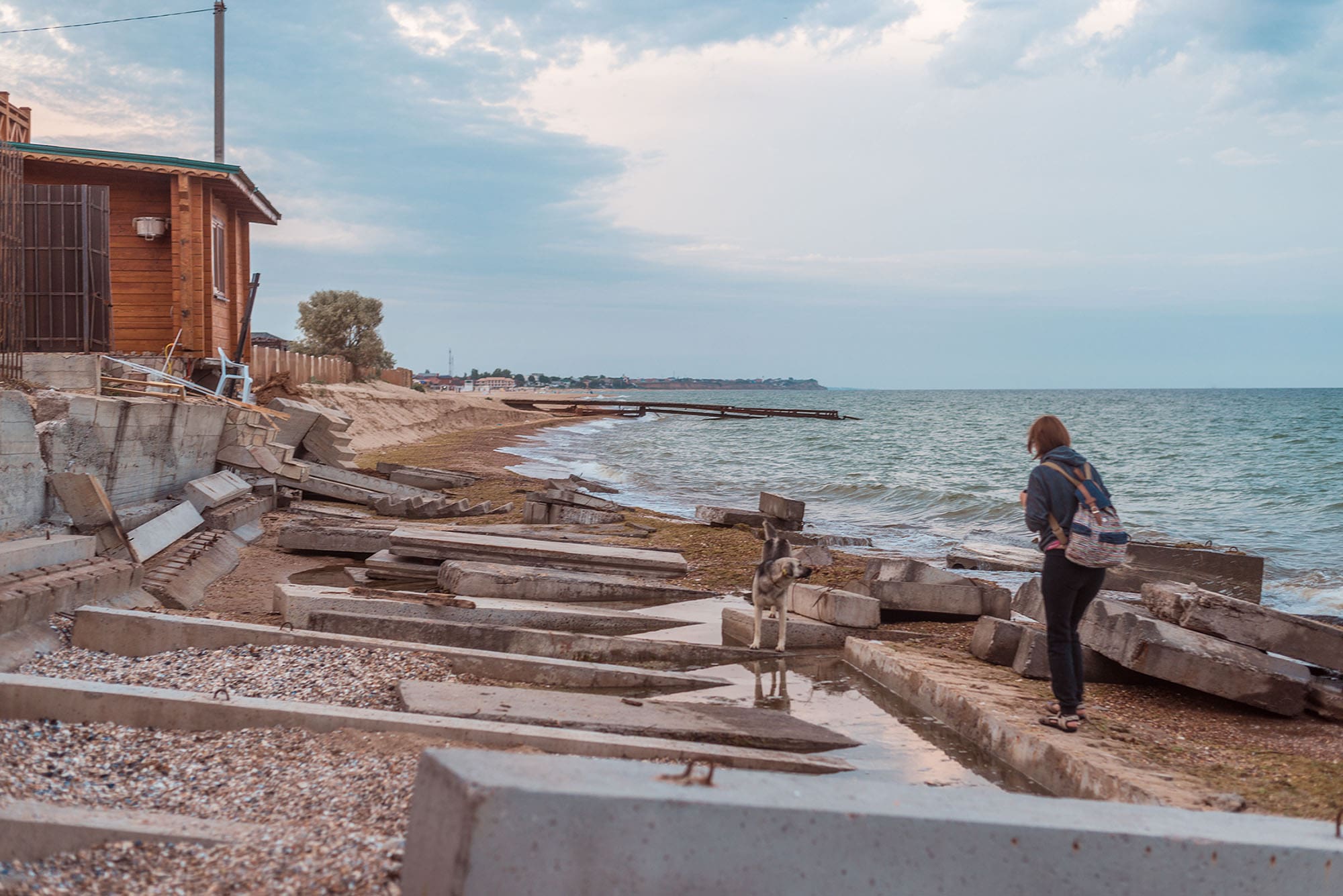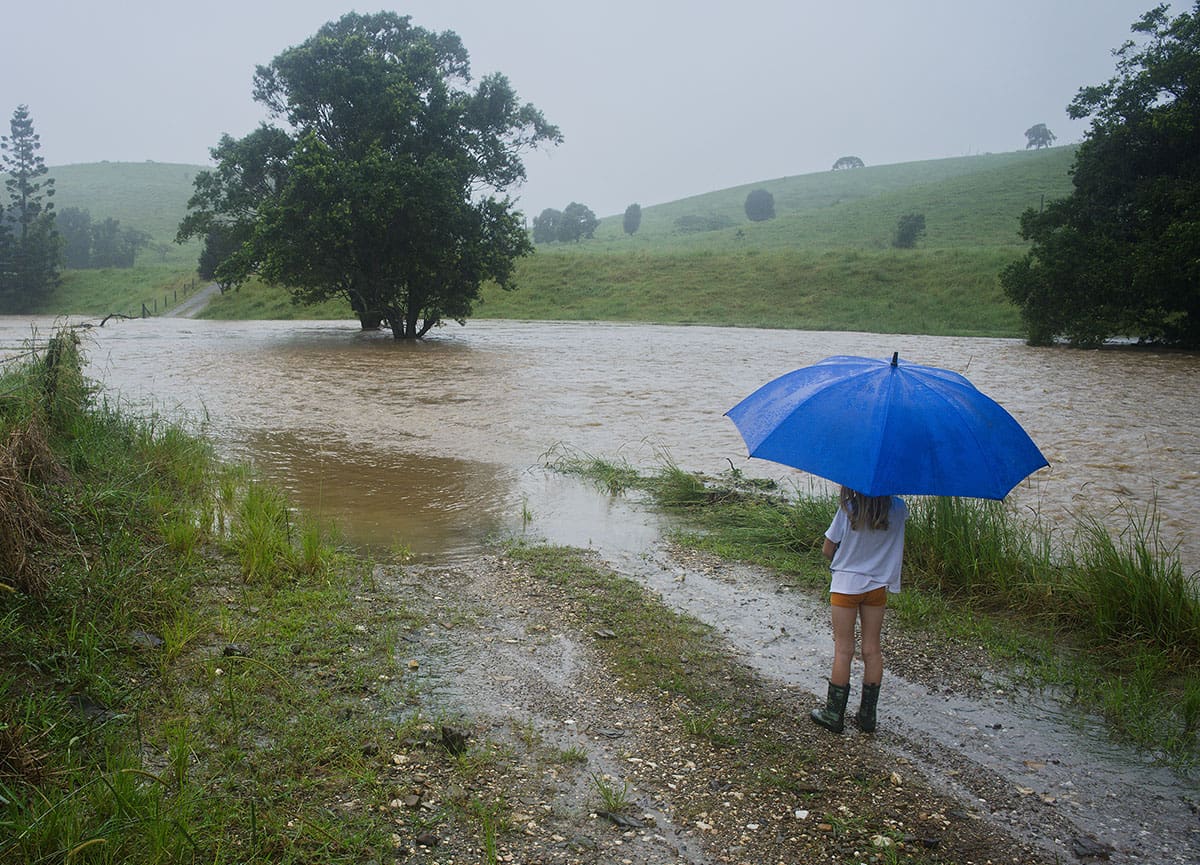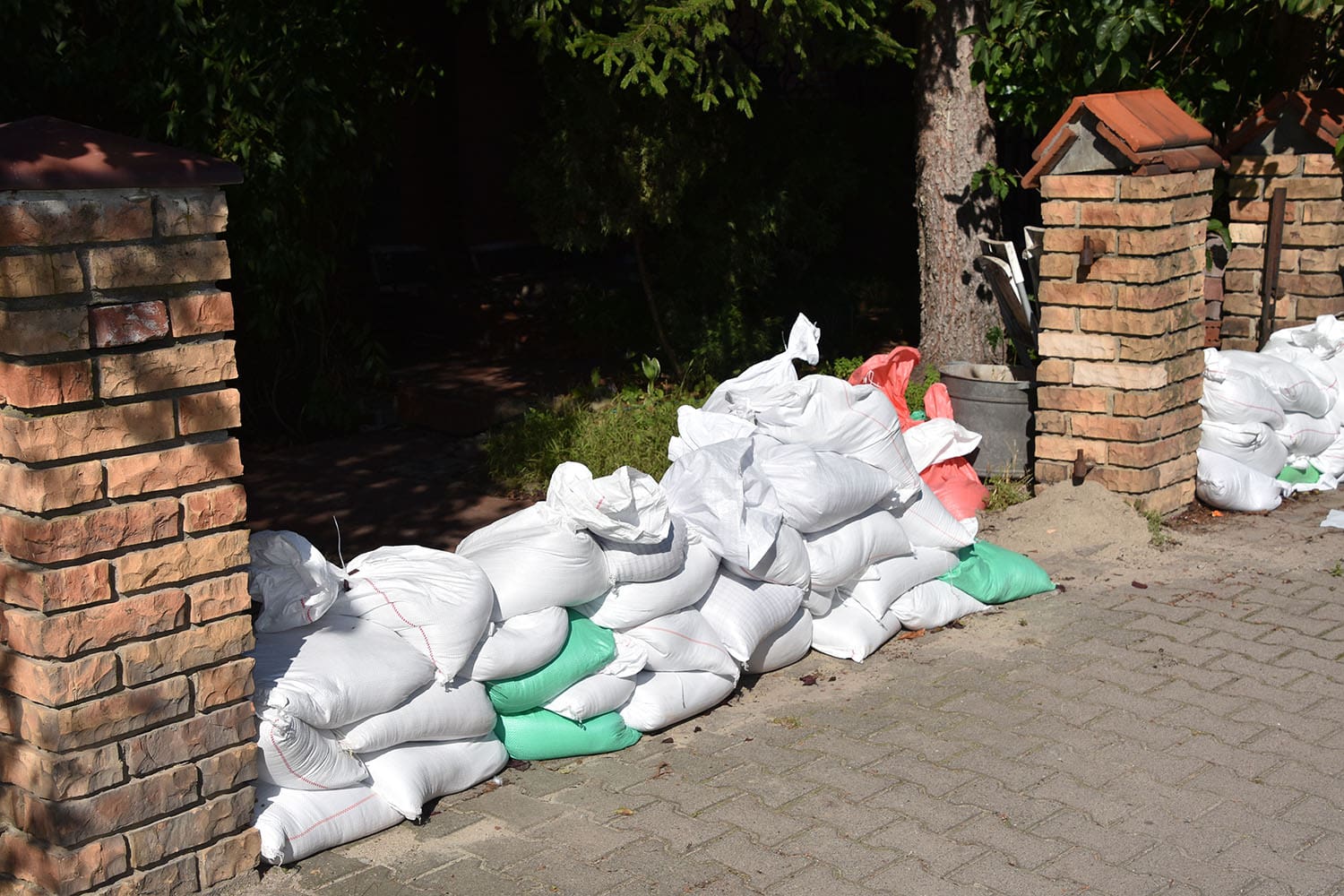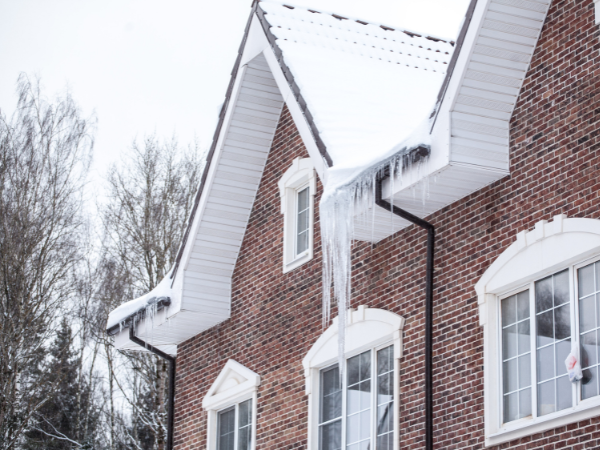Prepare your Home
If you reside in a wildfire-prone region, there are steps you can take to protect your home and assets. Though no building is completely fireproof, taking precautions can help protect your home or business from the worst possible outcome.
Create defensible space zones
Reducing wildfire risk starts with the creation of defensible space zones, which serve as a layer of protection between your house or business and the approaching wildfire.
Defensible space zones are broken out into three zones:
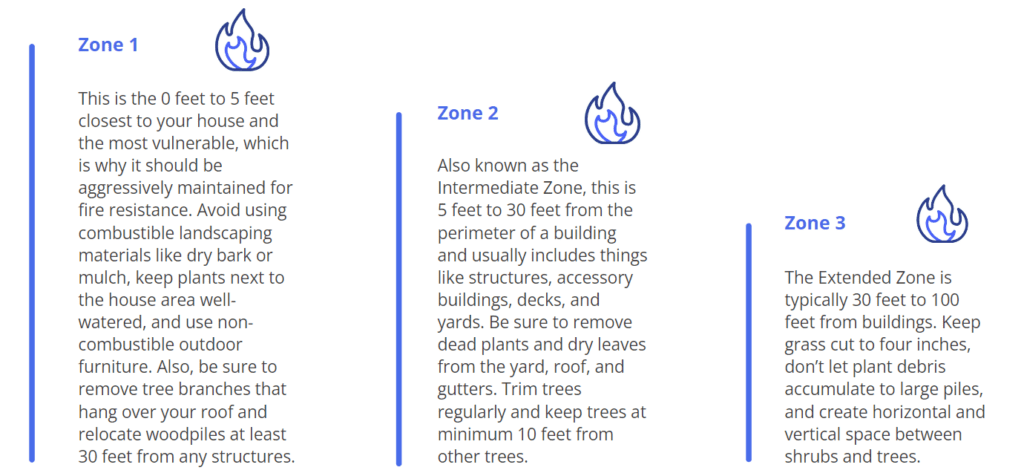
Proof your roof
Using flameproof materials for your roof can be the difference between a building being destroyed or surviving a wildfire. Roofs constructed from nonflammable materials, such as metal, slate, tile, or asphalt shingles are a strong line of defense against embers from wildfires, which often land on roofs. Wood shingles are a common roofing material, and while homeowners can treat these materials with fire retardant or install rooftop sprinkler systems, the safest bet is to reroof with nonflammable materials. It’s also important to keep gutters and roofs clear of dead greenery and anything else that’s flammable. Consider installing gutter guards that will prevent flammable materials from accumulating in the first place.
Form a secure perimeter
If something is attached to or touching a building, treat it as though it is a part of the structure. Something catching fire next to a building can be as disastrous as something burning on or within it. If you use mulch, replace it with gravel or stone mulch products. If you have plants near a building, keep them watered, and remove them if they die. Consider separating wood fences from buildings with metal or masonry barriers and keep combustible vegetation and materials away.
Work together
If you’ve taken the necessary precautions to protect your home or business, but neighbors haven’t, then your efforts will be far less effective. This is especially true in densely populated areas. In these cases, community efforts to fireproof are just as important as what individual property owners do to fireproof. The U.S. Forest Service also has a program that helps build communities that protect themselves against fires, and more than 1,400 sites nationwide have implemented community-level wildfire action plans under this program.
Plan for emergency responder access
In the unfortunate event that a wildfire does threaten your home or business, ensuring emergency responders are able to access your property is crucial. Make sure that street names and numbers are clearly legible, and that driveways are big enough to allow firefighters and first responders to access the premises.
Keep embers out of eaves and vents
Protect buildings with eaves from burning from the inside out by keeping the underside of your eaves clean and clear of anything that might cause embers to accumulate. When fires reach areas below open eaves, heat gets trapped and ignites exposed materials. Also, install covers called soffits to protect the undersides of eaves and use 1/8 inch or finer metal mesh in the vents. Embers can enter vents that don’t have screens and put your home at risk. If you have a pet door, make sure it has an effective seal and keep it closed during fire season.
Fireproof windows, walls, and decks
All windows and skylights should have screens, and if you don’t have double-paned and tempered windows, consider making the upgrade. This type of window can withstand higher temperatures and keep embers outside of buildings. Wood is often used for boards, panels or shingles and is common siding material, but wood is extremely flammable and not a good choice for fire-prone areas. Think about building or remodeling your walls with ignition-resistant building materials, including fiber cement wall siding, stucco, fire retardant treated wood, or other approved materials. Decks should also be built with ignition-resistant or non-combustible materials. Don’t store combustible materials beneath your deck.
For more information
We’re ready to help when you are. Get in touch and one of our experienced Baldwin advisors will reach out to have a conversation about your business or individual needs and goals, then make a plan to map your path to the possible.
This document is intended for general information purposes only and should not be construed as advice or opinions on any specific facts or circumstances. The content of this document is made available on an “as is” basis, without warranty of any kind. The Baldwin Insurance Group Holdings, LLC (“The Baldwin Group”), its affiliates, and subsidiaries do not guarantee that this information is, or can be relied on for, compliance with any law or regulation, assurance against preventable losses, or freedom from legal liability. This publication is not intended to be legal, underwriting, or any other type of professional advice. The Baldwin Group does not guarantee any particular outcome and makes no commitment to update any information herein or remove any items that are no longer accurate or complete. Furthermore, The Baldwin Group does not assume any liability to any person or organization for loss or damage caused by or resulting from any reliance placed on that content. Persons requiring advice should always consult an independent adviser.


